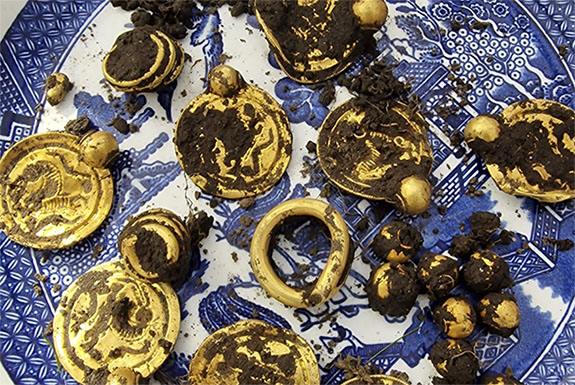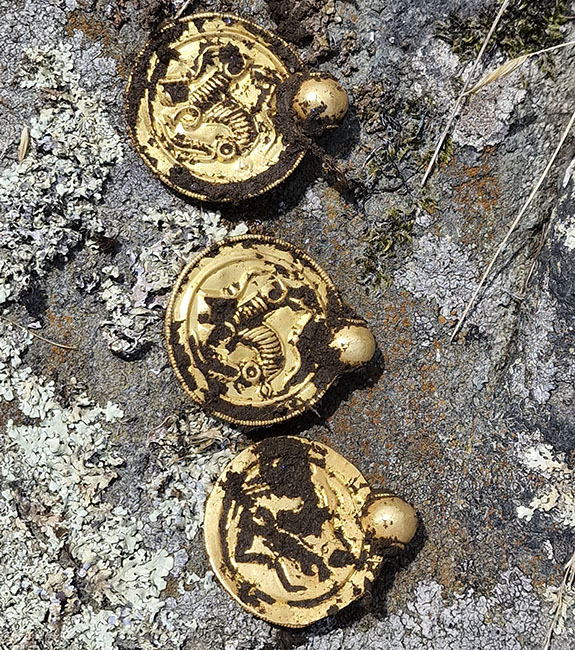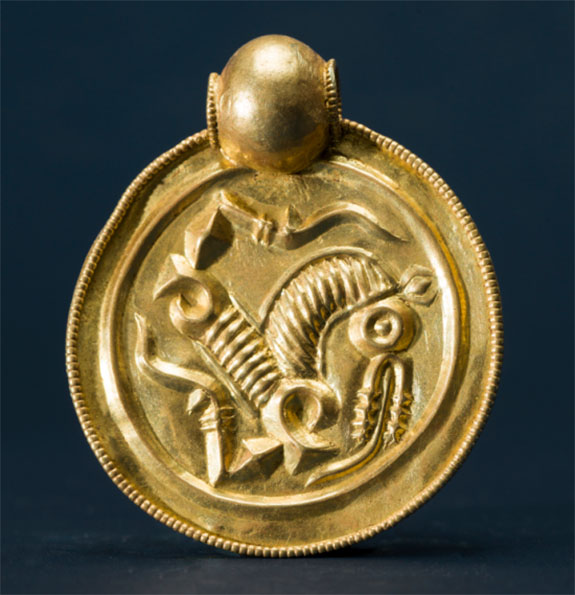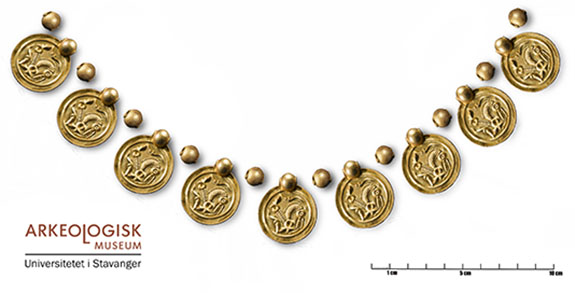Novice Metal Detectorist Credited With Making Norway's 'Find of the Century'
A 51-year-old novice metal detectorist recently discovered a cache of gold treasure on the private Norwegian island of Rennesøy. Dating back to the 6th century, the nine coin-like gold pendants, 10 gold beads and three gold rings weigh a total of 100 grams (3.5 oz).

“This is the find of the century in Norway,” said Ole Madsen, the Director of the Museum of Archaeology, University of Stavanger. "Discovering such a significant amount of gold at once is extremely rare.”

According to a University of Stavanger press release, Erlend Bore had purchased his first metal detector before the summer, partly to embark on treasure hunts but mostly to engage in a hobby that would get him off the sofa.
With the permission of the landowner, Bore started his exploration at the Rennesøy shore, but then decided to take his search inland after finding only scrap metal and a small coin.
"So, I decided to explore higher ground, and the metal detector immediately started beeping,” explained Bore.
The clump of earth that he scooped with his hands seemed to contain gold coins.

“At first, I thought I had found chocolate coins or plastic pirate treasure. It was surreal,” Bore said. But then his heart started to race when he realized the magnitude of his discovery.
In Norway, finders of cultural artifacts may not keep the pieces, but are entitled to a finder's fee, which is to be shared equally with the landowner. The Norwegian Directorate for Cultural Heritage has yet to announce what the finder's fee will be for the Rennesøy cache. (Norwegian law dictates that all objects dating before 1537 and coins older than 1650 are considered state property and must be reported.)
Associate Professor Håkon Reiersen at the Museum of Archaeology, noted that the gold pendants unearthed by Bore date from about AD 500, during the Migration Period in Norway. These gold pendants, known as “bracteates,” resemble gold coins but were used primarily as jewelry, not legal tender.

“The nine bracteates and the gold beads would have formed an exceptionally splendid necklace, which was crafted by skilled goldsmiths and worn by the most powerful individuals in society," stated Reiersen. "Finding so many bracteates together is exceedingly rare. This is the first such find in Norway since the 1800s."
The associate professor explained that many of Scandinavia’s major bracteate finds were buried during the mid-500s — a period marked by crop failures, worsening climate and plagues.
"The numerous abandoned farms in Rogaland from this era suggest that the crisis hit this region particularly hard,” Reiersen explained. “Based on the location of the discovery and findings from similar contexts, these were most likely either hidden valuables or offerings to the gods during that dramatic time.”
Credits: Excavation photos by Erlend Bore / University of Stavanger. Coin pendant by Annette Græsli Øvrelid, Museum of Archaeology, University of Stavanger. Reconstruction of necklace by archaeologist Theo Eli Gil Bell / University of Stavanger.

“This is the find of the century in Norway,” said Ole Madsen, the Director of the Museum of Archaeology, University of Stavanger. "Discovering such a significant amount of gold at once is extremely rare.”

According to a University of Stavanger press release, Erlend Bore had purchased his first metal detector before the summer, partly to embark on treasure hunts but mostly to engage in a hobby that would get him off the sofa.
With the permission of the landowner, Bore started his exploration at the Rennesøy shore, but then decided to take his search inland after finding only scrap metal and a small coin.
"So, I decided to explore higher ground, and the metal detector immediately started beeping,” explained Bore.
The clump of earth that he scooped with his hands seemed to contain gold coins.

“At first, I thought I had found chocolate coins or plastic pirate treasure. It was surreal,” Bore said. But then his heart started to race when he realized the magnitude of his discovery.
In Norway, finders of cultural artifacts may not keep the pieces, but are entitled to a finder's fee, which is to be shared equally with the landowner. The Norwegian Directorate for Cultural Heritage has yet to announce what the finder's fee will be for the Rennesøy cache. (Norwegian law dictates that all objects dating before 1537 and coins older than 1650 are considered state property and must be reported.)
Associate Professor Håkon Reiersen at the Museum of Archaeology, noted that the gold pendants unearthed by Bore date from about AD 500, during the Migration Period in Norway. These gold pendants, known as “bracteates,” resemble gold coins but were used primarily as jewelry, not legal tender.

“The nine bracteates and the gold beads would have formed an exceptionally splendid necklace, which was crafted by skilled goldsmiths and worn by the most powerful individuals in society," stated Reiersen. "Finding so many bracteates together is exceedingly rare. This is the first such find in Norway since the 1800s."
The associate professor explained that many of Scandinavia’s major bracteate finds were buried during the mid-500s — a period marked by crop failures, worsening climate and plagues.
"The numerous abandoned farms in Rogaland from this era suggest that the crisis hit this region particularly hard,” Reiersen explained. “Based on the location of the discovery and findings from similar contexts, these were most likely either hidden valuables or offerings to the gods during that dramatic time.”
Credits: Excavation photos by Erlend Bore / University of Stavanger. Coin pendant by Annette Græsli Øvrelid, Museum of Archaeology, University of Stavanger. Reconstruction of necklace by archaeologist Theo Eli Gil Bell / University of Stavanger.

